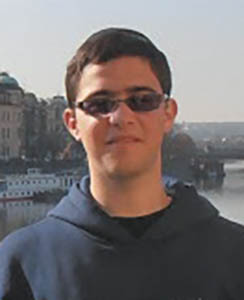
Lighting candles on Erev Shabbat—when does one light Chanukah candles on Erev Shabbat?
Rav Aviner: One lights Chanukah candles before accepting Shabbat and lighting Shabbat candles. One should ensure that the candles have long wicks and enough oil to remain lit well into Shabbat, for at least one of the candles. “Hanerot Halalu” and “Ma’oz Tzur” are usually sung along with “Shalom Aleichem” and “Eshet Chayil” after returning from shul.
Using a menorah with seven branches—may one light a seven-branched menorah to fulfill the mitzvah of lighting Chanukah candles?
Rav Aviner: It is forbidden to recreate any of the keilim that were used in the Beit Hamikdash (including the seven-branched menorah that was lit daily in the Temple, as opposed to the eight-branched chanukiah typically used nowadays on Chanukah). Your seven-branched menorah is surely not modeled exactly after the menorah of the Beit Hamikdash, but this doesn’t matter, because your menorah would nonetheless be able to be used for the service there.
When the Chashmonaim entered the Beit Hamikdash, they didn’t settle for using a nice menorah, but they specifically found a menorah with seven branches. If we look in Rambam’s commentary on Mishnayot (Menachot 3:7), there is an illustration of the menorah there—it is a menorah with rounded branches, not straight diagonal ones. There is disagreement as to whether or not this illustration is accurate. If it is, then any seven-branched menorah would be forbidden, no matter what its design is.
There is a famous question about Chanukah that has 100 answers (see Sefer Ner LaMe’ah): The jar that the Maccabim found had enough oil for one day, in which case the miracle of Chanukah was only that the candles remained lit for the seven subsequent days (and not eight days, as there was enough oil for the candles to be lit for that first day). So why is our celebration of Chanukah eight days long? This appears to be the difficulty of the Bet Yosef (Orach Chaim 670). One of Rav Kook’s answers was that it is prohibited to make a candelabra of seven branches, so they added a day to the holiday (to require an eight-branched chanukiah instead of the forbidden seven-branched menorah of the Temple). (Mitzvah Re’ayah pp. 84)
Nonetheless, there are two ways to allow you to use this seven-branched menorah for Chanukah:
Rav Zvi Yehuda Kook’s insight: You can connect (drill) the menorah to a table or bookshelf, and it won’t be considered a kli in and of itself. A kli is portable (mitaltel), and the menorah connected to a table or bookshelf is no longer portable. This is Rav Zvi Yehuda’s chidush, and Rav Herzog agreed with it.
You may either add a branch or remove one, and once it’s no longer seven-branched, the menorah may be used as a chanukiah.
Shemitta oil—may one fill a chanukiah with oil that has Kedushat Shevi’it?
Rav Aviner: This is a machloket. We are usually lenient and allow using shemitta oil on Chanukah, as this is not considered hana’ah, except for persumei neis (Piskei Shemu’ot 104).
“Chanukah Sameach”—Why do we say “Chanukah Sameach” and not “Chanukah Samecha”?
Rav Aviner: Even though the word Chanukah is feminine, when one says “Chanukah Sameach” he is usually referring to the holiday (chag), which is masculine. Even though Chanukah is not considered a “chag” in terms of the formal definition in halacha, we say “[Chag] Chanukah Sameach” in masculine to distinguish from a Chanukat HaBayit, which would be feminine. In normal speech, we skip the word “chag,” as this is what’s known as dilug hanismach (understood abridgement). Rambam in Moreh Nevuchim brings many examples of this, and it is also a common concept in other languages as well.
Mentioning Yehuda HaMaccabi in Al HaNisim: In the additional prayer Al HaNisim, the main paragraph begins “Biymei Matityahu” (“In the days of Matityahu), but didn’t Yehuda the Maccabi lead the battles? Matityahu called for resistance, but Yehuda the Maccabi participated in the actual fighting. If we’re already mentioning Matityahu, why don’t we also mention Yehuda?
Rav Aviner: Some explain that since Yehuda the Maccabi created the agreement with Rome, we don’t mention him and only speak of Matityahu instead. Yehuda entered into the agreement with Rome, but they didn’t come to his aid when their help was needed. Ramban (Bereshit 32:4) says that when Yaakov bowed to Esav, this became “ma’aseh avot siman l’banim,” that in the times of the Chashmonaim, when the Jewish people entered into a covenant with Rome, they were effectively “bowing to Esav.”
The Prophets were unhappy that the Jewish kings entered into agreements with Assyria and Egypt, because we could not rely on them to be our salvation; they foresaw the kingdom of Judea being abandoned in its time of need. There were times that the Jewish leadership relied at the same time on both Egypt and Assyria, even though they were both our enemies. When the time came that we really needed their help, though, they did not assist at all. Therefore, the authors of Al HaNisim did not want to mention Yehuda the Maccabi because he risked ruining Jewish continuity by entering into a covenant with our people’s sworn enemies, and the Chashmonaim were written instead.
Rav Shlomo Chaim Aviner is the French-born head of Yeshivat Ateret Yerushalayim in the Old City of Jerusalem. Shu”t SMS questions can be sent to Rav Aviner at +972 52-3653028.
Translated By Tzvi Silver/JLNJ Israel













